#Walter A. McDaniel
Explore tagged Tumblr posts
Text
I have a prediction on Ghostface's arcade ending in Mortal Kombat 1.
It's gonna be revealed that it's every Ghostface from the movies but every probable Ghostface in alternate timelines
Meaning these could be alternate Ghostfaces
Scream 1:Tatum and Randy as Ghostface
Scream 2:Hallie and Derek
Scream 3:Dewey
Scream 4:Jill and Rebecca
Scream 5:Amber and Tara(see my Tamber au)
Scream 6:Sidney Prescott and Gale Weathers
#Mortal Kombat#Mortal Kombat 1#Ghostface#Tamber#Billy Loomis#Stu Macher#Nancy Loomis#Mickey Altieri#Roman Bridger#Jill Roberts#Charlie Walker#Amber Freeman#Richie Kirsch#Wayne Bailey#Quinn Bailey#Ethan Landry#Tatum Riley#Randy Meeks#Hallie McDaniel#Derek Feldman#Dewey Riley#Rebecca Walters#Tara Carpenter#Gale Weathers#Sidney Prescott
24 notes
·
View notes
Text
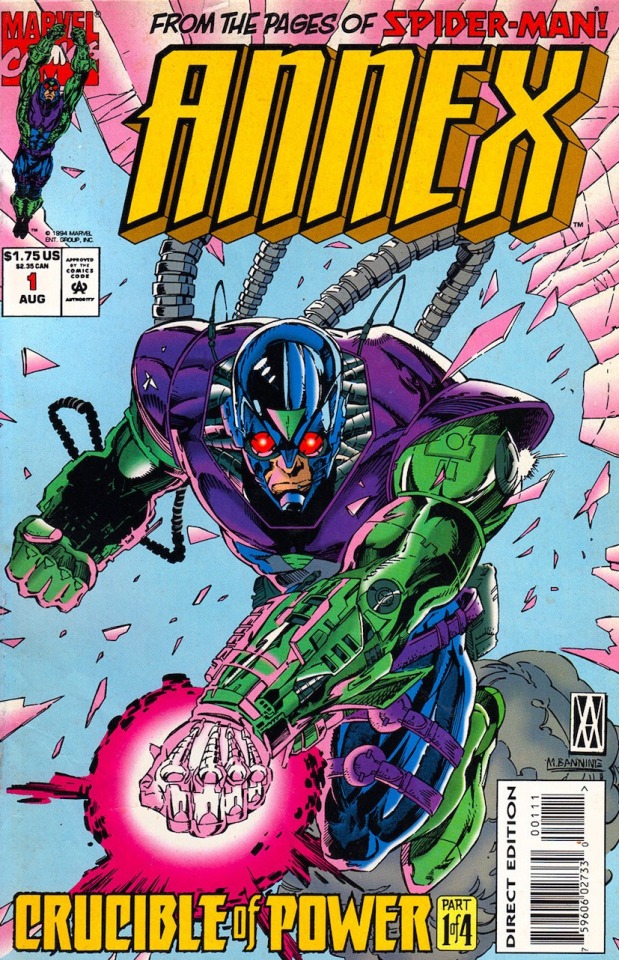
(1994)
#Annex#comic book#1994#Walter McDaniel#cover art#Matt Banning#Marvel#comics#Alex Ellis#armor#1990s#comic books
51 notes
·
View notes
Text

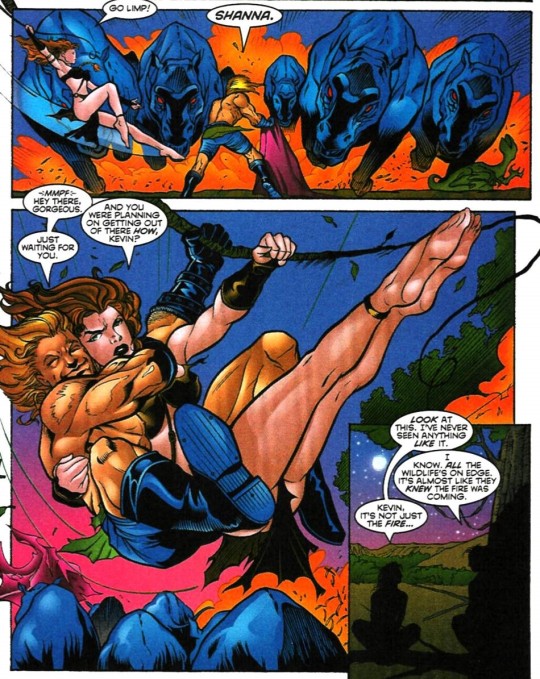
Ka-Zar and Shanna by Walter McDaniel
#ka zar#kevin plunder#shanna#walter mcdaniel#marvel comics#modern age#brian k vaughan#shanna the she devil#shanna o hara
1 note
·
View note
Text


Soooooooo-
I colored the pages. haha. my wrist hurts so bad
(Original Pencils + My Inks & commentary under the cut)
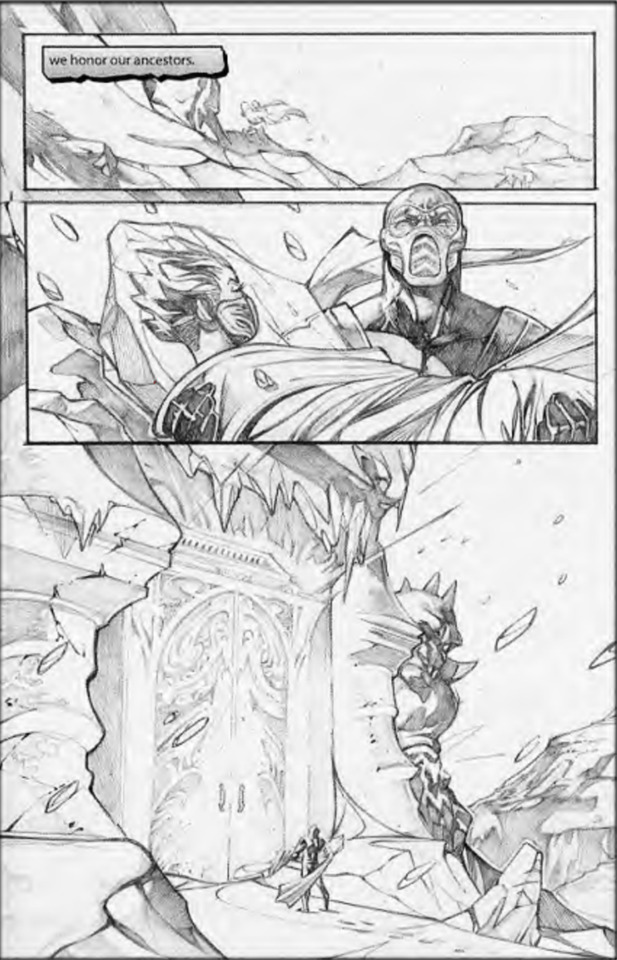

^ Original pencil drawings by Walter McDaniel

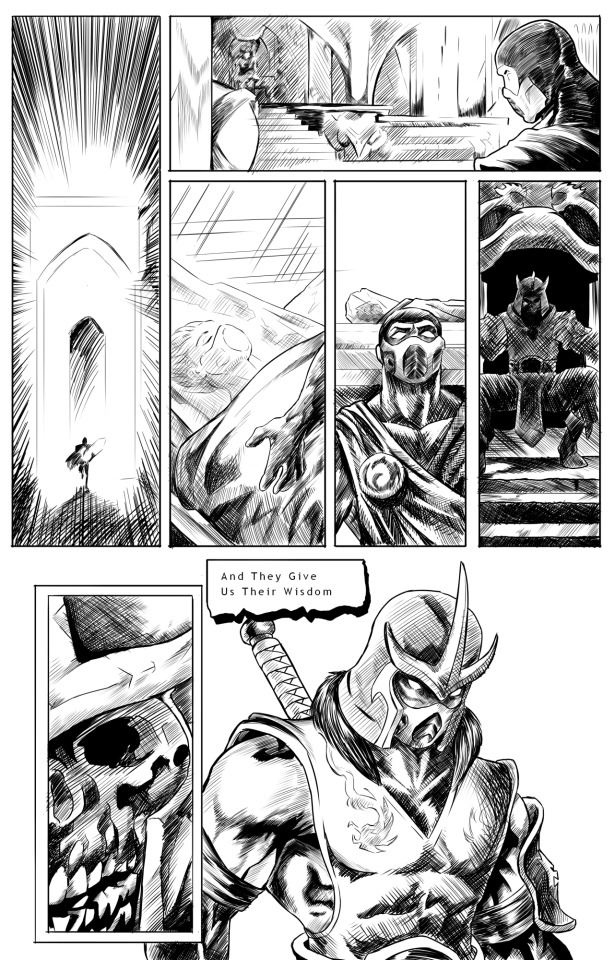
^ Fan Inks by Me (originally posted here)
I'm honestly not sure how happy I am with the colored version, but it was fun to do. Every time I think about the MKD comic, I just think it's kinda tragic that it wasn't fully inked and colored. Deception is my favorite MK game and I think it's art style and designs translates super well to comic format. Not to mention how awesome McDaniel's sketches are.
I'm being serious- please give the comic a look. If you can't find it online, send me an ask or a dm and I'll get it to you.
#gopher art#mortal kombat#mk subzero#mk frost#kuai liang#mortal kombat deception#there's a few more panels from this comic I might do up at some point (not full pages cause o w)#like this badass panel with noob dripping into the shadows that just UGH so cool#but for now. I'm happy with how these look.#Sorry for double posting about this today! I usually wouldn't#I've just- been working on this little tribute of sorts for so long#and I'm pretty happy with it
97 notes
·
View notes
Text
LÉGENDES DU JAZZ
RICHARD DAVIS, LE CONTREBASSISTE QUI DANSAIT AVEC LES ÉTOILES
‘’He found freedom in the bass by pivoting between the earth and the stars.”
- Jason Moran
Né le 15 avril 1930 à Chicago, dans les Illinois, Richard Davis a grandi dans le South Side. Sa mère ayant perdu la vie en lui donnant naissance, Davis avait été adopté par Robert et Elmora Johnson. Davis avait amorcé sa carrière musicale aux côtés de ses frères, en jouant de la contrebasse dans le trio vocal familial qui était dirigé par un de ses cousins. Davis s’était rapidement familiarisé avec le jazz grâce à l’impressionnante collection de 78-tours de sa mère qu’il écoutait sans arrêt.
Mais malgré son intérêt pour la musique, ce n’est pas avant l’âge de quinze ans que Davis avait ressenti le besoin de fixer son choix sur un instrument en particulier. Davis étant plutôt timide et introverti, il n’était pas vraiment attiré par des instruments de premier plan comme le saxophone ou la trompette. À l’âge de quinze ans, Davis avait finalement fixé son choix sur la contrebasse, un instrument qui l’avait toujours fasciné. Davis expliquait: “I was just enthralled by the sound. The bass was always in the background and I was a shy kid. So I thought maybe I’d like to be in the background.”
Au DuSable High School, Davis avait étudié sous la direction du légendaire capitaine Walter Dyett. Très sévère, Dyett avait dirigé le Eighth Regiment Infantry Band dans la Illinois National Guard, ce qui en avait fait un farouche partisan de la discipline. Même s’il était très strict, Davis avait été très influencé par Dyett, qu’il avait décrit comme “the kind of teacher you dream about.” Même s’il avait formé de grands noms du jazz comme Nat King Cole et Dinah Washington, Dyett avait incité Davis à ne pas se limiter au jazz et à s’intéresser à tous les styles de musique. À Chicago, Davis avait également eu comme mentors les contrebassistes Wilbur Ware et Eddie Calhoun.
Au DuSable High School, Davis avait eu comme camarades de classe le futur saxophoniste Clifford Jordan et le futur chanteur de blues Bo Diddley (alors connu sous le nom d’Ellas McDaniel). Comme contrebassiste, Davis avait été particulièrement influencé par Oscar Pettiford, Jimmie Blanton, Slam Stewart et Milt Hinton.
Parallèlement à ses études, Davis avait été membre du Chicago Youth Symphony Orchestra (connu à l’époque sous le nom de Youth Orchestra of Greater Chicago). Davis avait d’ailleurs participé au premier concert de l’orchestre à l’Orchestra Hall de Chicago le 14 novembre 1947.
Après avoir décroché son diplôme du high school, Davis s’était inscrit à la VanderCook School of Music, où il avait éventuellement obtenu un baccalauréat en éducation musicale.
Parallèlement à ses études, Davis avait appris son métier ‘’sur le tas’’ en se produisant dans les clubs et les bars de Chicago. C’est d’ailleurs en jouant dans les clubs que Davis s’était lié d’amitié et avait commencé à travailler avec le pianiste Sonny Blount, qui se ferait bientôt connaître sous le nom de Sun Ra. Lors de leur premier rencontre, Blount avait dit à Davis: “I’m not gonna take you to the moon because you’re not ready yet.” Cette déclaration avait ouvert les yeux de Davis, qui n’avait pas tardé à découvrir que Blount était un mystique qui entretenait une vision très spirituelle de la musique. Blount avait d’ailleurs eu une influence déterminante sur l’évolution ultérieure de Davis. Ne délaissant pas pour autant ses études, Davis avait poursuivi son apprentissage de la contrebasse avec Rudolf Fahsbender du Chicago Symphony Orchestra.
DÉBUTS DE CARRIERE
En 1952, Davis s’était joint au trio du pianiste Ahmad Jamal, avec qui il avait joué durant deux ans. Après s’être lié d’amitié avec le pianiste Don Shirley, Davis s’était installé à New York en 1954. Il avait d’ailleurs enregistré avec Shirley un album en duo intitulé Tonal Expressions. Davis avait fait équipe avec Shirley jusqu’en 1956, lorsqu’il s’était joint au Sauter-Finegan Orchestra.
Au début, Davis avait trouvé la ville de New York plutôt intimidante. Il expliquait: “There was so much talent, and I was always feeling that a bass player who was already established in New York would see me carrying a bass and say, ‘Where you going, boy?’” Mais en dépit de ses craintes, Davis n’avait pas tardé à conquérir le Big Apple. Son habileté de contrebassiste et la facilité avec laquelle il pouvait lire la musique l’avaient rendu très populaire comme accompagnateur.
Très en demande dans les années 1960, Davis avait travaillé avec plusieurs petits groupes de l’époque, dont ceux d’Eric Dolphy, Jaki Byard, Booker Ervin, Andrew Hill, Elvin Jones et Cal Tjader. Il avait aussi collaboré à l’enregistrement de plusieurs albums-phares du jazz, dont Out to Lunch d’Eric Dolphy, Black Fire et Point of Departure d’Andrew Hill, Dialogue de Bobby Hutcherson, In ‘N Out de Joe Henderson, Essence de John Lewis, Let My Children Hear Music de Charles Mingus, A Night At The Vanguard de Kenny Burrell, Life Time de Tony Williams, The Song Book de Booker Ervin et Rip Rig and Panic de Rahsaan Roland Kirk.
Après un bref séjour avec le Sauter-Finegan Orchestra, sur la recommandation du batteur Roy Haynes, Davis s’était joint en 1957 à la section rythmique de la chanteuse Sarah Vaughan, avec qui il avait enregistré quatre albums (dont Swingin’ Easy, qui comprenait le classique “Shulie A Bop’’) et voyagé en tournée jusqu’en 1960. Davis, qui avait énormément apprécié son séjour avec la chanteuse, avait déclaré au cours d’une entrevue qu’il avait accordée en 2014:
“You could say I went to the University of Sarah Vaughan. She was so musically skilled. And playing with her brought me to play with her accompanist Jimmy Jones, whose knowledge of chords was phenomenal. Sarah was so musical she could improvise beautifully along with the changes he would play. And the great percussionist Roy Haynes was in that band too, and he had such an amazing concept of rhythm… Once you’ve proven yourself with musicians at that level, other vocalists start to call you, because they figure you must know something.”
Davis avait été particulièrement redevable à Vaughan de l’avoir aidé à améliorer son jeu à l’archet. Il expliquait: “Some of the first bass players used the bow to play the walking bass line. And I heard all of that coming up as a kid. Therefore, when you start to study books of bass methods, you start out with the bow no matter what your intentions are, so there must be some intertwining of what I heard as a kid, what I heard working with Sarah Vaughan, wanting to imitate those vocal sounds.”
Mais après avoir joué durant trois ans avec Vaughan, Davis avait ressenti le besoin de relever de nouveaux défis. C’est alors que Davis avait été contacté par Eric Dolphy, qui était alors l’étoile montante du jazz d’avant-garde. Davis raconte comment Dolphy l’avait approché: “He said, ‘What are you doing next week?’ I said, ‘Nothing.’ And he said, ‘Why don’t you go down to the Five Spot with me?’” Passionné par la musique classique contemporaine, Davis n’avait pas tardé à se lier d’amitié avec Dolphy, un multi-instrumentiste qui excellait tant au saxophone alto qu’à la clarinette basse et à la flûte.
Après s’être joint au groupe de Dolphy, Davis s’était immédiatement senti attiré par le free jazz (ou ‘’New Thing’’, comme certains l’appelaient à l’époque). Comme Davis l’avait expliqué au cours d’une entrevue accordée en 2001: “Limiting yourself to a particular set of notes and chords is in a sense being a slave to the powers that be. We were resisting being imprisoned by chord changes, trying to free ourselves from the restrictions of scales and rhythms. Some people call this free music. Some of us called it our music. Unrestricted, indefinable, and free.”
Davis avait enregistré deux albums avec Dolphy: Iron Man (1963) et Out To Lunch! (1964), un album qui est aujourd’hui considéré comme un classique du jazz d’avant-garde. Dolphy, qui ne tarissait pas d’éloges pour l’originalité de Davis, écrivait dans les notes de pochette de l’album: “Richard doesn’t play the usual bass patterns. He plays rhythm with his lines. He leads you somewhere else.”
En plus des deux albums déjà cités, on peut entendre Davis sur les albums live de Dolphy enregistrés au club Five Spot, ainsi que sur différentes sessions publiées après la mort tragique de ce dernier en 1964. Un coffret publié récemment sous le titre de Musical Prophet: The Expanded 1963 New York Studio Sessions comprend un enregistrement de la pièce “Iron Man”, une pièce que Dolphy avait composée en l’honneur de Davis. Le coffret inclut également des pièces que Dolphy et Davis avaient enregistrées en duo, dont le classique ‘’Come Sunday’’ de Duke Ellington. Au cours de cette période, Davis avait également travaillé avec d’autres musiciens d’avant-garde comme le vibraphoniste Bobby Hutcherson, le batteur Tony Williams, et surtout le pianiste Andrew Hill, avec qui il avait enregistré sept albums de 1963 à 1969, dont le classique Point Of Departure (1964).
En 1966, Davis avait été un des membres fondateurs du Thad Jones/Mel Lewis Orchestra, dont il avait fait partie jusqu’en 1972 et qui se produisait tous les lundis soirs au légendaire Village Vanguard de New York.
Commentant le travail de Davis sur la pièce “Three and One’’ que Jones avait arrangée spécialement pour mettre en valeur les talents du contrebassiste, le chef d’orchestre et compositeur Darcy James Argue avait précisé: “Davis plays the nimble melody along with the horns, before dropping into steady, buoyant walking lines to drive the sax soli and horn solos. Then, Davis solos with gestural abstraction, like a Jackson Pollock action painting come alive.” Au cours de cette période, Davis avait également joué avec Don Sebesky, Oliver Nelson, Frank Sinatra, Miles Davis, Johnny Hodges, Dexter Gordon, Joe Henderson et Ahmad Jamal.
Mais le jazz ne nourrissant pas toujours très bien son homme, Davis avait été contraint d’accepter certains contrats ‘’alimentaires’’ afin de pouvoir assurer sa subsistance. Il avait même conçu des jingles publicitaires et travaillé sur des dizaines de projets ‘’mainstream’’, enregistrant notamment avec la chanteuse de R & B Ruth Brown et le percussionniste de jazz latin Willie Bobo. Il avait également enregistré avec plusieurs musiciens pop et rock. Davis avait notamment fait des apparitions sur les albums Smile de Laura Nyro, Watertown de Frank Sinatra, Something So Right de Paul Simon, Astral Weeks de Van Morrison, Greetings From Asbury Park, N.J. et Born to Run de Bruce Springsteen et At Seventeen de Janis Ian.
Le succès que Davis avait remporté avec l’album Astral Weeks lui avait d’ailleurs apporté d’autres contrats avec des artistes comme Rickie Lee Jones, Bonnie Raitt, Judy Collins, Buffalo Springfield, Carly Simon et Barbra Streisand. Commentant l’enregistrement de l’album, Davis avait précisé: “Some people are real disillusioned when I tell them about making the record. People say, ‘[Morrison] must have talked to you about the record and created the magic feeling that had to be there….’ To tell you the truth, I don’t remember any conversations with him. He pretty much kept to himself. He didn’t make any suggestions about what to play, how to play, how to stylize what we were doing.” De son côté, le producteur Lewis Merenstein avait déclaré: “[F]or me, it was Richard all the way. Richard was the soul of the album.” Quant au critique Griel Marcus du magazine Rolling Stone, il avait qualifié le travail de Davis de ‘’greatest bass ever heard on a rock album.”
En 1967, Davis était devenu un artiste de premier plan en enregistrant Heavy Sounds, une collaboration avec l’ancien batteur de John Coltrane, Elvin Jones. L’album avait permis à Davis de déployer toute l’étendue de sa virtuosité, notamment dans le cadre d’une remarquable version du standard “Summertime’’ de George Gerswhin. Mais il avait fallu attendre encore deux ans pour que Davis enregistre un premier album comme leader, Muses For Richard Davis, une session de jazz post-bop enregistrée pour l’étiquette allemande MPS. Mais s’il avait fallu du temps à Davis pour enregistrer un premier album sous son nom, il s’était bien repris depuis et avait gravé trente albums comme leader ou comme co-leader de 1967 à 2007.
À la fin des années 1960 et au cours des années 1970, Davis avait également été membre du New York Bass Violin Choir. Dirigé par le contrebassiste Bill Lee (le père du réalisateur Spike Lee), le groupe comprenait également d’autres virtuoses de cet instrument comme Ron Carter, Milt Hinton et Sam Jones.
Durant sa carrière, Davis avait aussi joué de la musique classique avec des chefs d’orchestre de renommée mondiale comme Igor Stravinsky (qui le considérait comme son contrebassiste préféré), Leonard Bernstein, George Szell, Pierre Boulez, Leopold Stokowski et Gunther Schuller. Davis, qui détestait les étiquettes, avait commenté ainsi son habileté à se produire dans différents types de musique: “Duke Ellington always said there’s no difference between jazz and classical. He didn’t classify any genres. To him, there were only two kinds of music: It’s either good or bad. I’m with Duke Ellington on that.”
DERNIERES ANNÉES
Après avoir vécu à New York durant vingt-trois ans, Davis était déménagé au Wisconsin en 1977 pour devenir professeur à l’Université de Wisconsin–Madison, où il avait enseigné la contrebasse, l’histoire du jazz et l’improvisation durant plus de quarante ans. Parmi ses étudiants, on remarquait William Parker, David Ephross, Sandor Ostlund, Hans Sturm, Alex Kalfayan, Ryan Maxwell et Karl E. H. Seigfried. Davis explique comment il avait été approché pour enseigner à Madison: “I got a call offering me a job at the university in Madison because they didn’t have a bass teacher on campus.’’ Davis n’ayant jamais entendu parler de cette université, il avait interrogé son entourage pour savoir où l’université se trouvait. Il précisait: “I asked around if anyone had heard of the place because this school kept calling me. Martin Luther King, Jr. talked about the importance of teaching others, and I had always wanted to teach young people. I thought maybe it was time.”
En raison de son travail d’enseignant, Davis avait dû réduire sensiblement le nombre de ses sessions d’enregistrement et de tournées. À l’instar de son mentor Walter Dyett, Davis avait rapidement acquis la réputation d’être un professeur très sévère qui accordait également d’importance à la discipline. Il expliquait: “I teach character. That’s the most important thing for me — follow-through and hard work. The world is not waiting on you, and there’s tons of talent out there.” Décrivant sa passion pour l’enseignement, Davis avait précisé: “I love teaching. I believe you should share what you have.” Le premier étudiant diplômé de Davis, Peter Dominguez, avait commenté ses débuts dans l’enseignement de la façon suivante: “He came from New York and he had that heavy New York accent – and it was hard to understand him – but he’d always do this thing where he’d grab your bass, anything that you were playing, and he would immediately tear it up. I mean, he would just play it flawlessly and he’d hand it back to you. He’d always say, ‘Yeah, and I don’t even know your bass.’ And you’d just go, ‘Oh…’ How do you respond to that? But it really taught me that I had to get down to business.”
Parallèlement à son travail de professeur, Davis s’était également distingué pour son implication sociale, notamment en participant à la création d’institutions combattant le racisme. L’engagement de Davis dans la lutte contre le racisme était directement lié à la discrimination qu’il avait vécue lors de ses tentatives visant à s’établir comme musicien classique. Davis expliquait:
“My environment with race issues started the day I was born. You’re born with dark skin, and that itself brings on attitudes of other people who are not dark-skinned to see you as someone to be oppressed and not to be given equal chances in society. So that is something that is permanent [...]. I was 18 years old and I could play any and all of the European classical music, but you weren’t allowed to participate in the symphony orchestra because there were racial issues and prejudices. They didn’t want to see you.”
En 2000, Davis avait fondé le chapitre local de l’Institute for the Healing of Racism, un organisme dont il avait été le président et qui avait pour but de favoriser l’harmonie interraciale par l’entremise d’échanges entre les différentes communautés culturelles.
Comme Davis l’avait expliqué au cours d’une entrevue qu’il avait accordée en 2010: “One of the big problems here is racism — racial profiling, racism, from other students towards black students and teachers and administrators alike. And I couldn't live with myself if I would not intervene and do something, and that’s what I’ve got. I had a daughter of 28, and I was setting a role model for her to do something.” En 1998, Davis avait également fondé le Retention Action Project (RAP) afin d’améliorer le taux de graduation des étudiants de couleur. Au cours des années, le R.A.P. avait réussi à faire venir à l’université les plus grands conférenciers et activistes, dont Peggy McIntosh, Jane Elliott, Francie Kendall, Nathan Rutstein, Victor Lewis, Hugh Vasquez et Allan G. Johnson. Davis avait aussi animé des ateliers. Un de ses ateliers avait pour titre ‘’Racial Conditioning: The Oneness of Humankind.’’
Davis avait aussi encouragé une plus grande diversité parmi le corps enseignant, qui était composé à 97% de professeurs blancs au moment où il s’était joint à l’université en 1977. Très intéressé par le développement de la relève, Davis avait également co-fondé en 1993 avec son ancien étudiant Peter Dominguez la Richard Davis Foundation for Young Bassists. La fondation attirait annuellement une centaine de jeunes musiciens de trois à dix-huit ans. Très impliqué dans la promotion de la justice sociale, Davis était toujours prêt à partager sa vision, sa résidence et ses ressources de façon à créer un environnement permettant à chacun de vivre dans la paix et la dignité. Davis avait également fondé à Madison un chapitre de l’Institute for the Healing of Racism, Inc. Davis a pris sa retraite de l’enseignement en 2016, même s’il avait continué d’être impliqué dans sa fondation.
En 1986, Davis s’était produit au légendaire club Sweet Basil de Greenwich Village avec un groupe qui comprenait le batteur Freddie Waits. Dans son compte rendu du concert, le critique Robert Palmer du New York Times avait commenté: “The relaxed, slightly behind-the-beat swing typical of so many jazz rhythm sections is not for them. Their accents fall right up on top of the beat, and they vary their springy forward momentum with rhythmic whirlpools and rapids and an explosive sense of dynamics.” À la fin des années 1980, Davis avait également fait partie des membres fondateurs du groupe New York Unit, un trio qui comprenait le pianiste John Hicks et le batteur Tatsuya Nakamura. Le trio avait enregistré huit albums pour des compagnies japonaises jusqu’en 1998.
En mai 2000, Davis avait publié un CD intitulé The Bassists: Homage to Diversity. Enregistré au Japon, l’album avait pour but d’exprimer l’unicité de l’humanité.
En 2016, Davis s’était rendu à Paris, en France, afin de participer à un hommage à John Coltrane avec Archie Shepp. Faisant le bilan de sa carrière en 2019, Davis s’était dit satisfait du travail accompli. Il avait précisé: “I’ve done some great things. I’ve had some phenomenal associations with some great composers, conductors, colleagues and the whole bit.”
Richard Davis est mort le 6 septembre 2023 à Madison, au Wisconsin, à l’âge de quatre-vingt-treize ans. Très malade, Davis avait été hospitalisé durant deux ans dans une maison spécialisée pour personnes âgées. Les causes exactes de sa mort n’avaient pas été précisées. Davis laissait dans le deuil une fille, Persia. Au moment de sa mort, Davis travaillait sur la rédaction de son autobiographie. C’est sa fille Persia qui avait annoncé le décès de Davis dans un communiqué. Remerciant la communauté de Madison de son soutien, Persia avait commenté: “We appreciate all the love and support the community has shown him over the years.’’ Persia, qui avait créé une page web en hommage à son père, avait ajouté: ‘’Richard touched the lives of thousands and will be missed by friends, family, fans, students, and colleagues around the world.”
À la demande de Davis, il n’y avait eu aucun mémorial ni funérailles publiques. L’animateur de jazz Chuck France avait rendu hommage à Davis le 20 septembre sur les ondes de la station de radio WORT.
Rendant hommage à Davis après sa mort, le pianiste Ethan Iverson avait déclaré: “The room became much larger when Richard Davis unpacked his instrument.” Un autre collaborateur de Davis, le pianiste Jason Moran, avait salué “the way he found the space in the bass line. Instead of ‘walking’ a bass line, Davis seems to ‘chart’ it. Like an astronomer charting the sky.’’ Moran avait ajouté: “In that way, he found freedom in the bass by pivoting between the earth and the stars.” Le dernier album de Davis, un enregistrement en duo avec le pianiste Junior Mance, était intitulé Blue Monk. L’album avait été publié exclusivement au Japon en 2009.
Lauréat de nombreux prix, Davis a été élu ‘’Jazz Master’’ par la National Endowment for the Arts en 2014. Davis a également remporté un Hilldale Award pour souligner son travail d’enseignant. Le prix lui avait été remis par l’ancienne chancelière de l’Université Madison, Donna Shalala. En 2000, le Club Rotary de Madison avait aussi décerné à Davis un Manfred E. Swarsensky Humanitarian Award. L’année suivante, le gouverneur de l’État du Wisconsin lui avait attribué le Governor’s of Wisconsin Arts Award. En 2003, Davis avait également remporté le Reverend Dr. Martin Luther King, Jr. Humanitarian Award. Décerné annuellement par la Cité de Madison, le prix lui avait été remis par la mairesse Susan J.M. Bauman dans le cadre du 18e anniversaire de la mort de King. En 2008, Davis s’était également vu attribuer un prix MAMA (Madison Area Music Award Michael St. John Lifetime Achievement Award). L’année suivante, l’Université de Madison avait attribué à Davis un Exceptional Service Award. La même année, la Wisconsin Historical Society lui avait décerné un Spencer Tracy Award for Distinction in the Performing Arts.
Davis est également récipiendaire de plusieurs doctorats honorifiques, dont un du Edgewood College de Madison, en 1998. En 2018, la Cité de Madison a aussi renommé une rue en son honneur. Davis avait également remporté le titre de meilleur contrebassiste dans le cadre de sept sondages consécutifs des critiques du magazine Down Beat de 1967 à 1974. Quant au magazine Rolling Stone, il avait classé Davis au 34e rang des 50 plus grands bassistes de tous les temps.
Davis a collaboré à plus de six cents albums au cours de sa carrière, en plus d’en diriger une douzaine comme leader, dont le classique Heavy Sounds, enregistré avec le batteur Elvin Jones en 1967. Davis a travaillé avec de nombreuses sommités du jazz au cours de sa carrière, dont Eric Dolphy, Sonny Stitt, Oliver Nelson, Ahmad Jamal, Sarah Vaughan, Miles Davis, Charles Mingus, Johnny Hodges, Dexter Gordon, Joe Henderson, Milt Hinton, Bobby Hutcherson, John Hicks, Tony Williams, John Lewis, Jaki Byard, Kenny Burrell, Ron Carter, Jason Moran, Roy Haynes, Booker Ervin, Louis Armstrong, Dizzy Gillespie, Pharoah Sanders, Archie Shepp, Andrew Hill, Elvin Jones et Cal Tjader. Davis s’est également produit dans les plus grandes salles à travers le monde, que ce soit au Japon, en Europe, en Russie, en Amérique du Sud, en Europe, à Hong Kong ou en Israël.
Commentant la polyvalence de Davis comme musicien, le contrebassiste et professeur Rufus Reid lui avait rendu hommage en ces termes: “Richard has played in every musical setting you could imagine. Whether it be performing in a symphonic orchestra, recording jingles, recording jazz records, and then playing until dawn in a club in the bowels of The Village in New York… and he might be doing all of that in one day.” Saluant la contribution de Davis au monde du jazz et à la lutte contre le racisme, le directeur éditorial de WISC-TV, Neil Heinen, écrivait dans le magazine Spectrum:
“As one of the world’s premier bass players, Davis’s music has touched the lives of countless fans, and his teaching has inspired generations of students in the classroom as well as with the Richard Davis Foundation for Young Bassists, Inc., which provides musical instruction for financially challenged youth. While the jazz master and professor could’ve ended his renowned biography there, his passion for social justice, for the healing of racism, has changed the lives of those who have accepted his invitation to open their hearts, minds and spirits to the history and pathology of racism within.”
Le contrebassiste William Parker, qui avait étudié avec Davis au cours de sa jeunesse à New York, ne tarissait pas non plus d’éloges au sujet du talent de son collègue. Parker avait déclaré: “Richard Davis was a beautiful musician and human being. He reminded me of an African king, regal and strong. I praise him not because he could play both classical and jazz. I applaud him because the brother had a big, poetic sound full of freedom.” Décrivant Davis comme un musicien et professeur très exigeant qui incitait ses collaborateurs à élever la qualité de leur jeu et à toujours donner le meilleur d’eux-mêmes, le batteur Victor DeLorenzo avait précisé: “And, I’ll never forget, Richard was talking with me one time and he said, ‘Victor, I’m glad that you’re a part of this group, but I have to ask you…what is it that you do?’ He was referring to me playing on stage because I was playing with brushes and it was kind of quiet – what I was doing – and he couldn’t really hear me. Because there was another drummer and another percussionist featured in the group. So, he was honestly asking, ‘What is it that you do?'”
De l’avis de DeLorenzo, si Davis était un aussi grand musicien, c’était parce qu’il cherchait constamment à apprendre et à s’améliorer. DeLorenzo avait ajouté: “He was a gifted musician in that he was a very studied musician and had a great knowledge of the jazz idiom. But also, he was known and respected as a musician that could play with any other musician. He just had that wide-open kind of a personality.”
En plus de sa carrière de musicien et de son travail de professeur, Davis était également un grand passionné d’équitation. Davis avait commencé à s’intéresser aux chevaux à l’âge de neuf ans lorsqu’il avait obtenu un travail à temps partiel dans une écurie de Chicago aux côtés de son camarade de classe Bo Diddley. Davis avait même participé à un concours de dressage.
©- 2025, tous droits réservés, Les Productions de l’Imaginaire historique
SOURCES:
FORDHAM, John. ‘’US jazz bassist who worked with Van Morrison and Sarah Vaughan and later became a professor of bass at Wisconsin University.’’ The Guardian, 27 septembre 2023.
HENKIN, Andrey. ‘’Richard Davis, Gifted Bassist Who Crossed Genres, Dies at 93.’’ New York Times, 11 septembre 2023.
‘’Richard Davis.’’ Wikipedia, 2024.
2 notes
·
View notes
Text
A Hero's Journey to the West (2022) 英雄西游
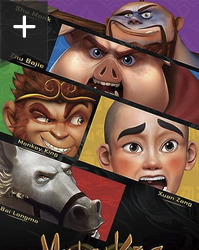
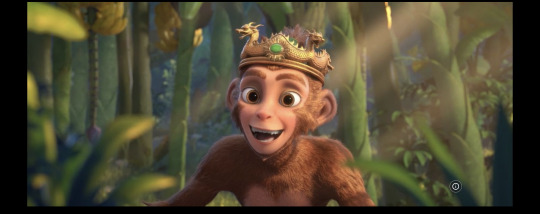
Director: Chris Bradley / Phil Nibbelink Screenwriters: James Felder / Pamela Hickey / Dennys McCoy Starring: Liu Xiao Ling Tong / Ma Dehua Genre: Animation Country/Region of Production: Mainland China / USA Language: English / Mandarin Chinese Also know as: Monkey King: A Hero's Journey to the West IMDb: tt8657268 Type: Retelling
Summary:
The remaining 4 film projects were announced at the Star Festival Film Industry Conference. The cartoon [Hero Westward Journey] is directed by Disney director Chris Bradley, with Marvel and DC chief artist Walter A McDaniel as the art director, and will be released in 2019. Follows a brave and fun monkey as he struggles for survival in the forest and hopes the world will teach him what he needs to know to be a better protector of those he loves.
Source: https://movie.douban.com/subject/26996826/
Link Trailor: https://www.instagram.com/p/CYAyw0nLE8w/
#A Hero's Journey to the West#Monkey King: A Hero's Journey to the West#英雄西游#jttw media#jttw movie#movie#lost media#animated#animation#retelling#sun wukong#tang sanzang#zhu bajie#sha wujing#bailong ma#bai long ma#rewrite
24 notes
·
View notes
Text
Birthdays 9.14
Beer Birthdays
Steve McDaniels (1968)
Five Favorite Birthdays
Dante Alighieri; Italian poet (1265)
Walter Koenig; actor (1936)
Sam Neill; actor (1947)
Marc Reisner; writer (1948)
Kimberly Williams; actor (1971)
Famous Birthdays
Pete Agnew; rock singer, bassist (1946)
Alice Stone Blackwell; suffragist (1857)
Allan Bloom; writer (1930)
Joyce Chen; chef, cookbook author (1917)
Mary Crosby; actor (1959)
Faith Ford; actor (1964)
Ashlyn Gere; porn actor (1967)
Charles Dana Gibson; illustrator (1867)
John Gould; English ornithologist (1804)
Sydney J. Harris; English writer (1917)
John Hawkins; actor (1910)
Joey Heatherton; actor (1944)
Tommy Lee Jones; actor (1946)
Clayton Moore; actor (1914)
Ivan Pavlov; Russian scientist (1849)
Margaret Sanger; Planned Parenthood founder (1883)
Oliver Stone; film director (1946)
Wendy Thomas; namesake of Wendy’s (1961)
Alice Tully; singer, philanthropist (1902)
Alexander von Humboldt; German naturalist, explorer (1769)
Hal Wallis; film producer (1898)
James Wilson; signer of the Declaration of Independence (1742)
Nicol Williamson; Scottish actor (1938)
Amy Winehouse; English rock singer (1983)
2 notes
·
View notes
Text
2017 Napa Valley A Cappella Extravaganza — VoicePlay live performances

VoicePlay on stage in Napa — photo by Haley Olson
Three years after their previous appearance, VoicePlay returned to northern California as the professional headliners for the annual high school and collegiate vocal festival in Yountville.
.

instagram
J.None was excited to hit the road with the guys after performing with them at Disney World for the previous two months.
.
youtube
When you're singing for other a cappella singers, it's hard to go wrong with a little musical theater. VoicePlay has plenty of Broadway material in their repertoire, and this was the most recent addition at the time.
Details:
title: Seasons of Love
original performers: cast of Rent (1996)
written by: Jonathan Larson
arranged by: VoicePlay & AJ Rafael
performance date: 28 January 2017
My favorite bits:
J.None's smooth timbre on the opening lines
the way they seamlessly pass the lead vocals around (But why doesn't Layne get a turn? 😞)
that momentary silence before they start the first chorus
when the rhythm section really kicks in 🥁🎸
Earl's crystal clear high tone on the second verse
that jazzy harmonized riff from Eli, J, and Earl
the layers of sound in the final chorus
such a lovely ending chord
Trivia:
As Geoff mentions in the intro, the guys had recorded this song as a collaboration with AJ Rafael in October, and the video premiered on his YouTube channel a couple weeks before this performance.
.
youtube
VoicePlay refuse to be confined to any one genre of music. They've tackled everything from barbershop to hard rock, country to sea shanties, pop ballads to orchestral pieces. So why not revisit the rap hits of their youth?
Details:
title: Aca Top 10 – Old School Rap
original songs / performers: "La-Di-Da-Di" by Slick Rick & Doug E. Fresh; [0:16] "Going Back to Cali" by LL Cool J; [0:32] "Push It" by Salt-n-Pepa; [0:56] "Parents Just Don’t Understand" by DJ Jazzy Jeff & the Fresh Prince; [1:09] "Bust A Move" by Young MC; [1:32] "It's Tricky" by Run-DMC; [1:49] "Just A Friend" by Biz Markie; [2:12] "Ice Ice Baby" by Vanilla Ice; [2:21] "The Humpty Dance" by Digital Underground; [2:44] "Rapper's Delight" by the Sugarhill Gang; [3:10] "Walk This Way" by Run-DMC & Aerosmith
written by: "La-Di-Da-Di" by Douglas "Doug E. Fresh" Davis & Richard "Slick Rick" Walters; "Going Back to Cali" by Rick Rubin & James "LL Cool J" Smith; "Push It" by Hurby "Luv Bug" Azor & Ray Davies; "Parents Just Don’t Understand" by Pete Harris, Will "Fresh Prince" Smith, Jeffrey "DJ Jazzy Jeff" Townes; "Bust A Move" by Marvin "Young MC" Young, Matt Dike, & Michael Ross; "It's Tricky" by Joseph "Rev. Run" Simmons, Darryl "DMC" McDaniels, Doug Fieger, & Berton Averre; "Just A Friend" by Marcel "Biz Markie" Hall; "Ice Ice Baby" by Robert "Vanilla Ice" Van Winkle, Mario Johnson, Queen, & David Bowie; "The Humpty Dance" by Earl Humphrey, Gregory "Shock G" Jacobs, & George Clinton; "Rapper's Delight" by Bernard Edwards, Nile Rodgers, Sylvia Robinson, Henry "Big Bank Hank" Jackson, Michael "Wonder Mike" Wright, Guy "Master Gee" O'Brien, Curtis "Grandmaster Caz" Brown, & William Hankshaw; "Walk This Way" by Joseph "Rev. Run" Simmons, Darryl "DMC" McDaniels, Steven Tyler, & Joe Perry
arranged by: Geoff Castellucci
performance date: 28 January 2017
My favorite bits:
Layne kicking things off with some old school beatboxing
Earl recreating the breathy part in "Push It"
Eli handling the scratching in the back during "Parents"
the middle three busting some lowkey moves as the lyrics instruct them to do
everybody bouncing to the beat during "Tricky"
Geoff continuing the "Ice Ice Baby" bass line under "The Humpty Dance" after the other guys leave him hanging
Eli showing off some slides in "Rapper's Delight"
J's little wave in response to the "hello" in the lyrics
the record skip effect at the end of "Walk This Way"
Trivia:
The guys originally recorded this countdown live in the studio, where they could do as many takes as they wanted. It's even more impressive seeing them perform it in front of an audience.
.
youtube
This video is missing the very beginning because the fan who recorded it got over-excited about them actually performing the song live. But how could they possibly resist singing the theme to one of the most beloved TV shows set in San Francisco when they were just north the city itself?
Details:
title: Everywhere You Look
original performers: Carly Rae Jepsen & Butch Walker for Fuller House (2016)
written by: Jesse Frederick, Bennett Salvay, & Jeff Franklin for Full House (1987)
arranged by: Layne Stein
performance date: 28 January 2017
My favorite bits:
the bouncy descending bass line leading into the chorus
Eli and J grooving along to their own harmonies
Earl's scooping crescendo as a transition into the second verse
the call and response of ♫ "never go away" ♫ "like the Olsen twins" ♫ 👭
that quick crisp diction of the ♫ "how do you know… " ♫ section
hearing a few audience members shout "Hey!" in time with the guys
that big coordinated descending riff at the end
Trivia:
This song was the second entry in VoicePlay's PartWork series, performed entirely by multiple versions of Earl and Layne.
.
Additional photos


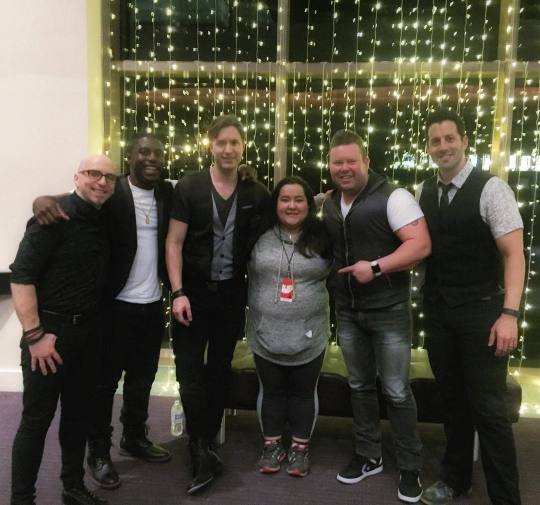

.
Before they flew out of San Francisco the next day, J.None took a side trip to meet up with a friend, see a bit of the city, and get some fresh air.
instagram
4 notes
·
View notes
Text
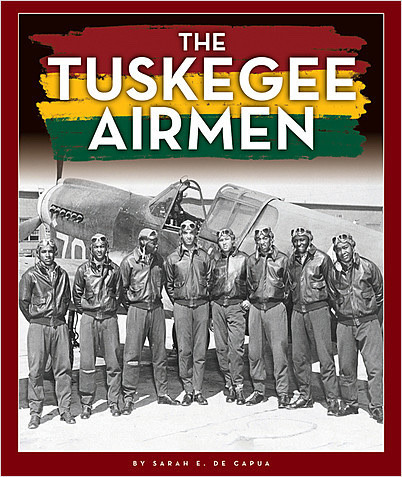
The Tuskegee Airmen were a group of African-American and Caribbean-born military pilots who fought in WWII. They formed the 332nd Fighter Group and the 477th Bombardment Group of the Army Air Forces. The name applies to the navigators, bombardiers, mechanics, instructors, crew chiefs, nurses, cooks, and other support personnel.
All African American military pilots who trained in the US trained at Moton Field, the Tuskegee Army Air Field, and were educated at Tuskegee University. The group included five Haitians from the Haitian Air Force and one pilot from Trinidad. It included a Hispanic or Latino airman born in the Dominican Republic.
March 22, 1942 - The first five cadets graduate from the Tuskegee Flying School: Captain Benjamin O. Davis, Jr. and Second Lieutenants Mac Ross,
Charles DeBow, L.R. Curtis, and George S. Roberts. They will become part of my the famous 99th Pursuit Squadron. List of Tuskegge Airmen.
Paul Adams (pilot)
Rutherford H. Adkins
Halbert Alexander
William Armstrong
Lee Archer
Robert Ashby
William Bartley
Howard Baugh
Henry Cabot Lodge Bohler
George L. Brown
Harold Brown
Roscoe Brown
Victor W. Butler
William Burden
William A. Campbell
Herbert Carter
Raymond Cassagnol
Eugene Calvin Cheatham Jr.
Herbert V. Clark
Granville C. Coggs
Thomas T.J. Collins
Milton Crenchaw
Woodrow Crockett
Lemuel R. Custis
Floyd J. Crawthon Jr
Doodie Head
Clarence Dart
Alfonza W. Davis
Benjamin O. Davis Jr. (C/O)
Charles DeBow
Wilfred DeFour
Gene Derricotte
Lawrence Dickson
Charles W. Dryden
John Ellis Edwards
Leslie Edwards Jr.
Thomas Ellis
Joseph Elsberry
Leavie Farro Jr
James Clayton Flowers
Julius Freeman
Robert Friend (pilot)
William J. Faulkner Jr.
Joseph Gomer
Alfred Gorham
Oliver Goodall
Garry Fuller
James H. Harvey
Donald A. Hawkins
Kenneth R. Hawkins
Raymond V. Haysbert
Percy Heath
Maycie Herrington
Mitchell Higginbotham
William Lee Hill
Esteban Hotesse
George Hudson Jr.
Lincoln Hudson
George J. Iles
Eugene B. Jackson
Daniel "Chappie" James Jr.
Alexander Jefferson
Buford A. Johnson
Herman A. Johnson
Theodore Johnson
Celestus King III
James Johnson Kelly
James B. Knighten
Erwin B. Lawrence Jr.
Clarence D. Lester
Theodore Lumpkin Jr
John Lyle
Hiram Mann
Walter Manning
Robert L. Martin
Armour G. McDaniel
Charles McGee
Faythe A. McGinnis
John "Mule" Miles
John Mosley
Fitzroy Newsum
Norman L Northcross
Noel F. Parrish
Alix Pasquet
Wendell O. Pruitt
Louis R. Purnell Sr.
Wallace P. Reed
William E. Rice
Eugene J. Richardson, Jr.
George S. Roberts
Lawrence E. Roberts
Isaiah Edward Robinson Jr.
Willie Rogers
Mac Ross
Robert Searcy
David Showell
Wilmeth Sidat-Singh
Eugene Smith
Calvin J. Spann
Vernon Sport
Lowell Steward
Harry Stewart, Jr.
Charles "Chuck" Stone Jr.
Percy Sutton
Alva Temple
Roger Terry
Lucius Theus
Edward L. Toppins
Robert B. Tresville
Andrew D. Turner
Herbert Thorpe
Richard Thorpe
Thomas Franklin Vaughns
Virgil Richardson
William Harold Walker
Spann Watson
Luke J. Weathers, Jr.
Sherman W. White
Malvin "Mal" Whitfield
James T. Wiley
Oscar Lawton Wilkerson
Henry Wise Jr.
Kenneth Wofford
Coleman Young
Perry H. Young Jr.
#africanhistory365 #africanexcellence
2 notes
·
View notes
Text
Cyberwar (Part 5)

Deathlok II #21
Good conclusion.
Final battle with the Cyberwarriors.
This arc slightly lost some steam as it got overpopulated, but these last 2 chapters were still a good read. Most of this one was action. The tone is relentlessly grim. Coldblood adds nothing, but Deathlok and Siege are a dynamic and interesting combo. There are very few character beats amid the violence, but the ones we do get are very good indeed. I think it's fair to say this 5-parter has made Collins' pacifism more compelling and relevant than it has been before.
On Sale Date: January 26, 1993.
Total Paid Circulation: 106,938 (average: #18-29).
Wizard Top 100: #91.
Gregory Wright (6 of 6).
Walter McDaniel (5 of 6).
8/10
2 notes
·
View notes
Text
Motives for everyone
Scream 1. Randy was in love with SIdney and tired of the rejections and Tatum just wanted to kill her cheating boyfriend
Scream 2. Derek & Hallie's would be similar to Mickey's motivation and the Sorority sisters just wanted the fame of Sidney in their house and dying in their house
Scream 3 1. Dewey was unhealthily obsessed with Sidney. He was the third killer during Billy and Stu's murders. He tied up loose ends and stalked Sidney. He was tired of being the town laughingstock and tired of being the butt of Tatum's jokes. So he convinced Billy and Stu to help him. They'd become infamous, while Dewey would be seen as the hero and get the girl he always wanted, but that never happened. If he can't have SIdney, no one can. Jennifer was someone that Gale fucked over to get the Woodsboro gig. It was supposed to be hers. Gale took everything from her and she wanted revenge. So Dewey and Jennifer come together and enact their plan.
Scream 3 2. Milton is the mastermind. He essentially wants to tie up loose ends. If the story of Maureen gets out, his studio and the Stab franchise is finished. So Milton decides to use his son Roman and his new actress for Sidney to kill all ties to Maureen Prescott, finally ending with Sidney's death. Roman's motive remains the same and Angelina's motive is her cut motive was her being obsessed with Sidney, taking the role of Sidney and wanting to become Sidney.
Scream 4:Judy was in love with Billy Loomis and jealous of Sidney. Rebecca would be selling the story of Sidney's tragic demise.
Unbeknownst to Sidney and Neil, Maureen had an affair with her brother in law before Sidney was born. This led to the destruction of Kate's one and only marriage and Neil later found out after Maureen's death. Kate initially planned her solo revenge around the time the events of the first Scream took place, she's spent years mad that her love life was destroyed by Maureen and inevitably told Neil, who feels his life was derailed by his wife's actions. Sidney isn't their main target, they plan to target people in their lives who did nothing to help them or they felt contributed to their personal struggles. For Neil, it's those who Maureen had affairs with, ie. Cotton Weary, Hank Loomis. For Kate, it's family who continued to associate with Maureen despite knowing the truth and her ex-husband. Jill kills Neil, Sidney kills Kate, Jill's friends become collateral damage. Jill and Sidney become extremely close after this as they're the only close family they have left.
Scream 5:Embracing his uncle’s legacy and attempting to turn Sam into his partner for her to embrace her father’s legacy. This time, the Macher is the mastermind and groomed Tara to be his partner like Richie did.
Tara’s motive would be Sam left her. Her father left her. Her mother is a drunken whore and Wes was obsessed with her and the only guy she liked was stolen from her. Her life was shit and it started the moment that Sam left her. Vince enters her life and they plan to get back at Sam for leaving her and they'd discover something interesting. Not only is Sam the daughter of Billy, but Tara is the daughter of Stu. If Vince can't have the daughter of Billy, he can have his cousin work with him and fulfill Stu's legacy. It would end with Sidney killing Vince while Sam has Tara at her mercy, but she can't kill her. She leaves her alive and makes things interesting as the only Ghostface to be captured alive with Tara promising that she will finish what she started with Sam just hoping she can bring her sister back.
Scream 6. Gale's motive. She needs Ghostface. Her fame is slipping and she lost Dewey. But no one can profit off of the memory of a good man. So Gale decides to become the monster she created to sell more blood and she has the perfect tools at her disposal. The Woodsboro subreddit group. Greg and Jason are the perfect patsys. Their goal is to finish Richie's movie and no one would suspect she had a part to play in this. If for some reason Greg and Jason fail, she has Brooks and Danny by her side to finish her work. And unlike in the actual Scream 6, there is more of a bloodbath throughout New York, on campus and Chad actually dies
For a more indepth look at what Gale's motive could be, watch this video
youtube
#Scream#Ghostface#Randy Meeks#Tatum Riley#Derek Feldman#Hallie McDaniel#Dewey Riley#Jennifer Jolie#Judy Hicks#Rebecca Walters#Vince Schneider#Tara Carpenter#Jason Carvey#Greg Bruckner#Danny Brackett#Scream Brooks#Youtube#Kate Roberts#Neil Prescott
5 notes
·
View notes
Text
Round 2 matchups

Results of round 1 can be found here.
Full list of matchups under the cut
Jesse White vs Ed Wynn
Lionel Barrymore vs Charlie Ruggles
Frank Morgan/Frank Jenks vs Betty Garrett
Mischa Auer vs S.Z. Sakall
Patsy Kelly vs Margaret Hamilton
Hans Conried vs Hattie McDaniel
Leonid Kinskey vs Eve Arden
Edward van Sloan/Jack Oakie vs Butterfly McQueen
Zasu Pitts vs Charlotte Greenwood
Marjorie Main vs Bert Lahr
Marie Dressler vs Una O'Connor
Dwight Frye vs Esther Muir
Thelma Todd vs Christian Rub
Gail Patrick vs Sydney Greenstreet
John Carradine vs Verna Felton
Una Merkel vs Conrad Veidt
Scatman Crothers vs Guy Kibbee/Walter Brennan
Nat Pendleton vs Raymond Massey
Erich von Stroheim vs Eddie Anderson
Reginald Gardiner vs Joseph Calleia
Sam Levene vs Edna May Oliver
Charles Laughton vs Gabby Hayes
Elsa Lanchester vs Lionel Atwill
Bill Robinson vs Andy Devine
Ernest Truex vs Edward Arnold
Sterling Holloway vs Nancy Kulp
Jean Adair vs Grady Sutton
Glenda Farrell vs Lillian Yarbo
Marjorie Gateson vs Joy Hudges
George E. Stone vs Donald Meek
Warner Baxter/Jerry Colonna vs Spring Byington
Felix Bressart vs Eric Blore
3 notes
·
View notes
Text
A master thief coincidentally is robbing a house where a murder—in which the President of The United States is involved—occurs in front of his eyes. He is forced to run, while holding evidence that could convict the President. Credits: TheMovieDb. Film Cast: Luther Whitney: Clint Eastwood President Richmond: Gene Hackman Seth Frank: Ed Harris Kate Whitney: Laura Linney Gloria Russell: Judy Davis Bill Burton: Scott Glenn Tim Collin: Dennis Haysbert Walter Sullivan: E.G. Marshall Christy Sullivan: Melora Hardin Sandy Lord: Kenneth Welsh Laura Simon: Penny Johnson Jerald Michael McCarty: Richard Jenkins Red: Mark Margolis Valerie: Elaine Kagan Art Student: Alison Eastwood Waiter: Yau-Gene Chan Airport Bartender: George Orrison Medical Examiner: Charles McDaniel Repairman: John Lyle Campbell White House Tour Guide: Kimber Eastwood Oval Office Agent: Eric Dahlquist Jr. Watergate Doorman: Jack Stewart Taylor Reporter: Joy Ehrlich Cop: Robert Harvey Film Crew: Producer: Clint Eastwood Screenplay: William Goldman Novel: David Baldacci Director of Photography: Jack N. Green Production Design: Henry Bumstead Art Direction: Jack G. Taylor Jr. Sound Effects Editor: Doug Jackson Music Editor: Donald Harris Editor: Joel Cox Original Music Composer: Lennie Niehaus Casting: Phyllis Huffman Producer: Karen S. Spiegel Second Assistant Director: Tom Rooker First Assistant Camera: Bill Coe Sound Re-Recording Mixer: Gregg Rudloff Stunt Coordinator: Buddy Van Horn Stunts: Jennifer Watson-Johnston Production Manager: Michael Maurer Second Assistant Director: Robert Lorenz First Assistant Director: Bill Bannerman Second Assistant Director: Dodi Lee Rubenstein Set Decoration: Richard C. Goddard Set Decoration: Anne D. McCulley Assistant Editor: Michael Cipriano Assistant Editor: Anthony Bozanich Assistant Editor: Gary D. Roach Script Supervisor: Cate Hardman Supervising Sound Editor: Alan Robert Murray Supervising Sound Editor: Bub Asman Supervising Dialogue Editor: Lucy Coldsnow-Smith ADR Supervisor: Jessica Gallavan Sound Mixer: C. Darin Knight Sound Re-Recording Mixer: John T. Reitz Sound Re-Recording Mixer: David E. Campbell Camera Operator: Stephen S. Campanelli Costume Supervisor: Deborah Hopper Key Costumer: Cheryl Scarano Set Costumer: Darryl M. Athons Set Costumer: Peggy A. Schnitzer Makeup Artist: Francisco X. Pérez Makeup Artist: Tania McComas Key Hair Stylist: Carol A. O’Connell Hairstylist: Vivian McAteer Special Effects Coordinator: Steve Riley Special Effects: Jeff Denes Special Effects: Joe Pancake Special Effects: Francis Pennington Second Second Assistant Director: Alison C. Rosa Second Second Assistant Director: Maura T. McKeown Sound Effects Editor: Gary Krivacek Sound Effects Editor: Jayme S. Parker Sound Effects Editor: Adam Johnston Camera Operator: Anastas N. Michos Choreographer: Shirley Kirkes Stunt Double: Jill Brown Movie Reviews:
#assassination#corruption#Daughter#government#politics#rape#secret service#the white house#Top Rated Movies#u.s. secret service agent#USA#usa president#washington dc
0 notes
Video
Carole Lombard | Frederic March | Nothing Sacred (1937) | Screwball Comedy
Nothing Sacred is a classic 1937 American Technicolor screwball comedy movie. The film was directed by William A. Wellman. It was produced by David O. Selznick. The stars are Carole Lombard and Fredric March. Cast Carole Lombard as Hazel Flagg Fredric March as Wally Cook Charles Winninger as Dr. Enoch Downer Walter Connolly as Oliver Stone Sig Ruman as Dr. Emil Eggelhoffer (as Sig Rumann) Frank Fay as master of ceremonies Troy Brown as Ernest Walker Maxie Rosenbloom as Max Levinsky Margaret Hamilton as Vermont drugstore lady Hattie McDaniel as Mrs. Walker Olin Howland as Will Bull You are invited to join the channel so that Mr. P can notify you when new videos are uploaded, https://www.youtube.com/@nrpsmovieclassics
0 notes
Text

Another tribute to the Mortal Kombat: Deception comic
(original sketch under the cut)

Original pencils by Walter McDaniel
This take on Noob melting into the shadows might be my favorite singular panel from the whole comic. Its just really striking. So of course I had to ruin it with my color choices whdbehdb
Jokes aside, I'm pretty happy with my interpretation of the sketch
Bonus:
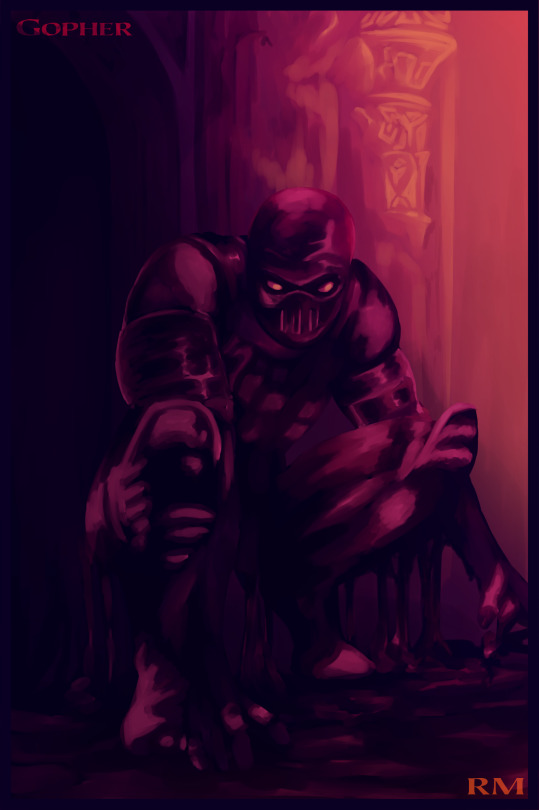
^ base painting (no effects)

^ levels edited to be brighter and more saturated (before noise and chromatic aberration)
#gopher art#mortal kombat#noob saibot#bihan#i realize it looks crusty but i love how colored boise and chromatic aberration looks on these paintings#it just makes it feel DONE. reduces the look of brush strokes. makes the colors look less muddy. satisfying#also the visual trope of shadows acting like a liquid? fucking peak. its so good to my brain. just so spooky
25 notes
·
View notes
Note
Most wanted females?
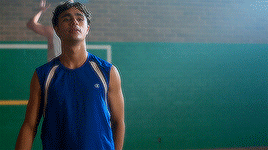
my brain always goes blank with these asks so shout out to our members, we would love to see the following;
felicia hardy, cindy moon, wanda maximoff, lorna dane, carol danvers, shuri, kate bishop, america chavez, ororo munroe, susan storm, jean grey, monica rambeau, and kitty pryde (marvel), cassie sansmak, dinah lance, helena bertinelli, cassandra cain, stephanie brown, kate kane, diana prince, raven, barbara gordon, zatanna zatara, harley quinn, selina kyle, kara zor-el/danvers, pamela isley, lois lane, and mera (dc comics), mindy meeks-martin, sidney prescott, tatum riley, casey becker, gale weathers, kirby reed, hallie mcdaniel, rebecca walters, and cici cooper (scream), bianca barclay, morticia gomez, enid sinclair, larissa weems, and yoko tanaka (addams family eu), faith lehane, willow rosenberg, cordelia chase, tara maclay, dawn summers, marcie ross, and kendra young (btvs), sansa and arya stark, catelyn tully/stark, ygritte, gilly, yara/asha greyjoy, margaery tyrell, missandei, brienne of tarth, daenerys, rhaenyra. rhaena, baela, and helaena targaryen, alicent hightower, and laena velaryon (asoif eu), johanna mason, tigris, lucy gray baird, clove, glimmer, foxface, rue, effie trinket, madge undersee, and annie cresta (thg), lexie grey, izzie stevens, april kepner, callie torres, arizona robbins, amelia shepherd, jo wilson, addison montgomery, maggie pierce, and stephanie edwards (grey's anatomy), bella swan, alice and esme cullen, rosalie hale, and angela weber (twilight), max mayfield, nancy wheeler, and chrissy cunningham (stranger things), adaine and aelwyn abernant, fig faeth, antiope jones, penny luckstone, sam nightingale, zelda donovan, daniella barkstock, katja cleaver, ostentatia wallace, ayda aguefort, tracker o'shaughnessy, ruby and jet rocks, amanda maillard, saccharina frostwhip, misty moore, liz herrera, esther sinclair, sundry sidney, margaret encino, and lucienne rex (dimension 20), jaina solo, bo-katan kryze, fennec shand, ahsoka tano, leia organa, rey, jyn erso, hera syndulla, asajj ventress, rose tico, satine kryze, and qi'ra (star wars)
1 note
·
View note